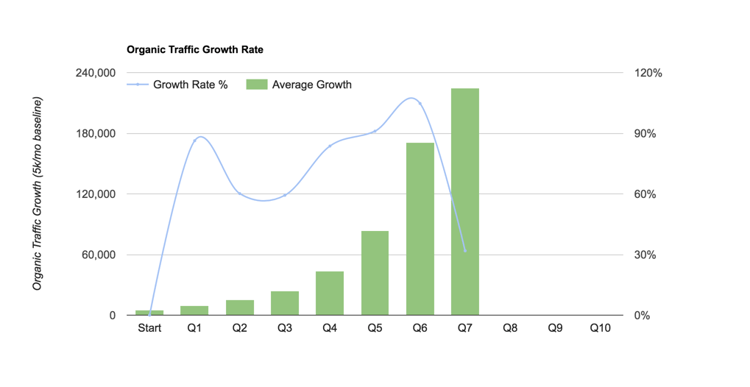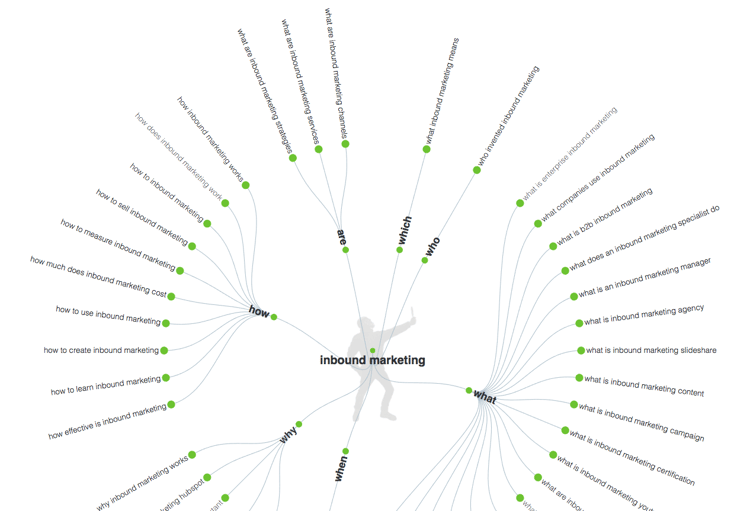Every week a new marketing tactic is unleashed on the public. It seems the best way for a marketer to establish themselves as an "expert" is to come up with a new method or technique.
In reality, the world of digital marketing moves slower than it seems. As "growth hackers" race around trying to discover a newer, easier way of building website traffic, the rest of us just do what works.
The panic in the marketing world is based on the false idea that if you're doing what works and not experimenting with new methods, you will eventually lose. While it's true, you can't become a dinosaur, it's really not that dramatic.
The best marketers are the ones who know what is working right now. And, they fight the shiny object syndrome while keeping their nose to the grindstone.
Great marketing is often more elbow grease and less lottery-style viral explosions. It's not as sexy or exciting as the thought of posting a single article that brings millions of visits overnight - which happens very seldom. But these tactics are stable, reliable, and effective.
How to Increase Organic Traffic Without Buying Ads or Building Backlinks
First, a small rant: marketers ruin everything, including SEO.
We started by discovering that backlinks drove massive SEO power on Google. So, we learned how to build thousands of backlinks, and to even automate that process.
The result was a bunch of junk at the top of Google search. Google dropped the hammer, and many marketers claimed link building was "dead."
Then, some hustler decided to go back to one-to-one link building, manually contacting bloggers and web admins to get links added to their content. And, it worked!
Then, they wrote about how it worked - and the crowd of zombie marketers followed. Now, I get multiple messages a day, all "personalized" to me, from marketers asking me to include links to their content inside of mine.
Yes, marketers are now ruining one-on-one relationship building by trying to automate it.
You can't automate everything. The tactics we continue to use rely more on sweat equity than gambling or spamming.
If you want to build organic traffic without building backlinks or paying for ads, these tactics will work for you. Just realize that content marketing is not a get-traffic-quick scheme - it's a long-term strategy.
Proof This Strategy Works

This is a chart that shows the growth of organic traffic across all of our clients. When we mash all their statistics together, this is what their organic traffic looks like.
When Long-Term Growth Isn't Fast Enough

This is a company who wanted "quick wins" rather than a long-term, consistent strategy -- and their traffic has seen no growth in two years. Imagine where they would be if they had executed this strategy for the past 24 months.
Building Organic Traffic Using Only On-Site SEO
Step 1: Audit and Correct On-Site SEO
The first thing you need to do is audit your website for on-site SEO. The tool I like to use is Screaming Frog, but there are others out there that can do the same thing.
In a nutshell, this is what you're looking for:
- Page Titles:
- Do they include keywords?
- Do they sound interesting enough to click on?
- Page URLs:
- Do they include keywords?
- Meta Descriptions:
- Do they include keywords?
- Do they act as a compelling lede to your content?
- Image Alt Tags:
- Do they include keywords?
- Heading Tags:
- Are you using H1's and H2's in your content?
- Do they include keywords?
- Are they used to naturally break the content up into bite-size chunks?
Every important page on your website needs to be meticulously audited and optimized for search.
Step 2: Identify Your Crown Jewel Search Terms
What are the 3-6 terms that get a lot of search traffic but are considered rankable for your brand?
These will be your primary search terms, or Crown Jewel SEO keywords.
For instance, one of our Crown Jewels is "inbound marketing," and another is "growth driven design." Those are two terms we want to rank for, and though they are definitely a challenge, we are working to get to the top of Google for those terms, among a handful of others.
Once you identify those key terms, move on to step 3.
Step 3: Build Anchor Pages for Crown Jewel Terms
What is an anchor page? It's a page designed to rank #1 in Google for a specific term, and to be a contextual anchor for all relevant content.
Look at the top 5-6 results for your Crown Jewel search term - you need to create a page that is more valuable and packed with more helpful content than all of those pages. If you want to really win, it should be more valuable than all those pages combined.
We want to rank this page to #1, and we're not relying on gimmicks to do it. We're going to earn that top spot by deserving it - and that will help us keep it long-term as well.
Your anchor page should be the best, most informative page on the internet for that Crown Jewel search.
Step 4: Build Topic Clusters Around Your Crown Jewel Keywords
What is a topic cluster? It's a cluster of topics around a specific, central topic. If you're wanting to build traffic around inbound marketing, for instance, you will have a wide range of topics associated with that - much like the topic of this page.
Here's an example of a topic cluster on inbound marketing:

Actually, that was a quick graphic from AnswerthePublic.com - which is a great tool, but it shouldn't be where you stop. You can use it to kickstart ideas, but ultimately, you want to use keyword research and Google Suggest to build a huge list of long-tail topics.
Here's a blog post on brainstorming blog topics that might help as well.
Step 5: Build a Publishing Calendar
Now that you've identifies a ton of topics to create content about, you can start building a publishing calendar strategy.
I like to work on 90-day strategies - 4 strategies a year. This means I will go through the strategy process four times every 12 months, and then spend the rest of my time executing on this strategy.'
We have found through experimentation that publishing once a week grows traffic, but very slowly. Multiple times, we have increased publishing from once a week to twice a week and witnessed a night and day difference in traffic growth.
So, take it from me, you want to plan to publish at least twice a week. Most of the time, this ends up being somewhere between 8 and 10 articles a month.
Choose the dates each of your blog posts will go live, and the dates each blog post should be finished writing, editing, and loading into your content management system.
And then, stick to the plan.
Step 6: Hyperlink Religiously
You have anchor pages that sit at the root of your entire SEO strategy. All of your content should be on topics associated with those anchor pages. You need to send Google the signals of the pages and context of your website.
So, hyperlink your pages and posts together in a ever-growing web of links.
In every blog post, if you use a Crown Jewel term (or a close variation of that term) hyperlink it to your anchor page. If you use the term multiple times in the same post, you don't need to hyperlink every one of them, but it doesn't hurt to link a couple times per page.
Need an example? Look above where we mention inbound marketing the first time. See what I just did there?
You need to send a ton of contextual links to your anchor pages. Then, you also need to interlink your content.
Step 6: Be Consistent, Long Term
The important thing is consistency - so when you set your calendar, make the decision to stick with it for at least 12 months. In the beginning, growth will be slow - but you will start to see signs of life after 3 months - and even more exciting growth picking up around 8-12 months.
If you follow this strategy for 8 months, and you don't see results, you probably need to examine the quality of your content and make sure it's actually helpful rather than "salesy."
Here's a case study of a client where we used this strategy, and this strategy alone. no link building. No paid traffic. Just on-site work and content marketing. We started publishing about once a week, but the growth was slow. So, we picked it up to two a week and it started to skyrocket within a couple months. You can read all about it in the case study.
This works.
It's not a "quick win," and it's not a gimmick that brings a ton of results quickly. But, when executed over time, it brings a consistent growth rate and is the keystone strategy that's helping us 10X our clients traffic, leads, and customers.







